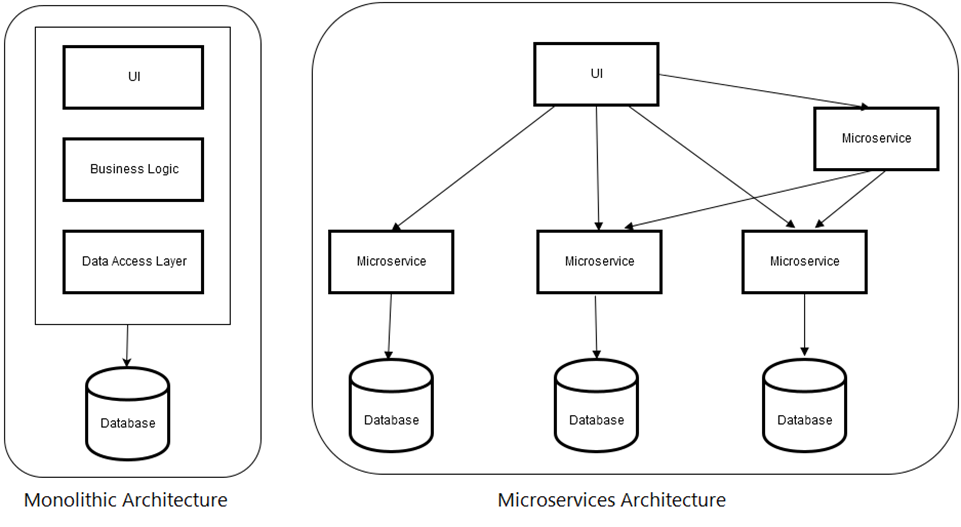Having trouble scaling up your application or software? Or is it bugs, that are bugging your users all the time?
Or is it the server cost that’s making you lose your sleep?
Take it easy. Switch over to serverless architecture right away to overcome these limitations and much more that is often closely associated with monolithic architecture – a traditional model for application and software development.
Serverless architecture, on the other hand, helps in faster and easier scaling up of your application/software. It also ensures reduced server cost. Not to mention bugs could be busted conveniently.
So it comes as no surprise that some tech titans such as Amazon, eBay, IBM, Netflix, Google, and much more are already employing serverless architecture.
OpenXcell’s think-tank strongly feels that it’s time for both small and medium-tech companies to take advantage of this incredible technology, which in all likelihood is going to reinvent the software/application development space in 2017.
Our company recently hosted a webinar on the same to highlight the incredible importance of serverless architecture and how it fills in the gaps that have come to be associated with the time-consuming, expensive, traditional monolithic model.
The topics broadly covered in the Monolithic to Serverless Webinar consisted of:
1] Monolithic Architecture
2] Serverless Architecture
3] Transferring your current application into Serverless Architecture
Monolithic Architecture
The term monolithic architecture is derived from the historical era when ancient buildings were carved, cast, or excavated from a single piece of material, such as rocks.
The term monolithic architecture is derived from ancient buildings, which were carved, cast, or excavated from a single piece of rocks.
For instance, the monolithic churches of Ethiopia and Pancha Rathas in India were carved out of a single piece of rock. The biggest disadvantage of such huge buildings was that even if small repair work was undertaken in an obscure corner of the building it affected the whole architecture perse.
Likewise, in the software/application development context, the components of the monolithic architecture are tightly coupled. In other words, interdependent. So, if you plan to scale up, bust bugs, or even happen to make slight changes in any of the components, the whole app gets affected. That means, in such cases, you need to rewrite the application from scratch.
Disadvantages of Monolithic Architecture
• Difficulty in Server maintenance
• Difficulty in Scaling
• Multiple uses of server-side languages
• Higher server cost as application scales
Yes, an application developed on such architecture has several disadvantages than advantages.
Enter Serverless Architecture – The Hot New Trend Catching Fire
This architecture ensures that when one single component is under repairs the other parts are not affected.
And, yes, don’t go by the literal meaning of it. Serverless actually means you appoint a third-party vendor like AWS to take care of your server needs instead of taking care of things on your own. The best bit of this architecture is that components are loosely coupled. So when scaling up or changes are called for in any of the components, it can be done easily, without troubling other components.
Further, serverless apps cost less, because the servers only run when necessary.
Advantages of Serverless Architecture
- Faster recovery from breakdowns
- Reduces server maintenance
- Code Reusability
- Freedom to code in different languages
Migration of your current application to serverless architecture
OpenXcell can help you with that. But then, we want you to do some homework beforehand. In other words, find out how being serverless is going to benefit your application: whether it will help speed up your application, reduce server cost, help in project expansion, create sub-product of the main product using other languages, and so on.
Say, for instance, you’ve got a social networking application with a special feature that helps upload multiple images and videos. But then this feature is pretty slow and so you wish to speed up the same. Simple. Just redevelop this special feature on serverless architecture to accelerate its speed. And it will be done.
Hosting Providers who could help in the migration process – from monolithic to serverless
• AWS Lambda
• Google Cloud functions
• Microsoft Azure Functions
• IBM OpenWhisk
• Iron.io
• Webtask
Should you opt for Serverless Architecture?
Yes, of course, if you are developing a new application. Or, if your project can be modularized, you should try the same. But then, it differs from project to project basis. So better consult with a technology company to make sure you take the right step forward.
Check out our Webinar: Monolithic to Serverless
You could also download the Slideshare here.
Conclusion:
Serverless architecture is going to be the future of application development and software development. And, if the cost part is worrying you, take it easy. The cost of developing your app/software on serverless is the same as that on monolithic.










